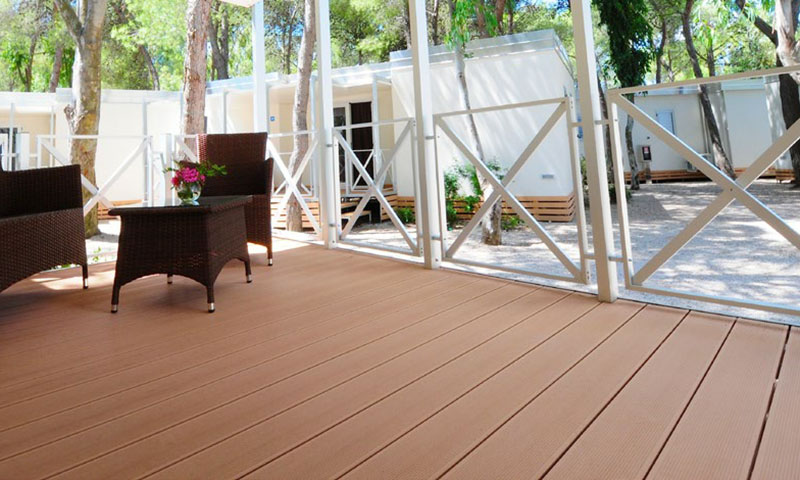Static Electricity on Composite Flooring

Composite flooring is versatile and suitable for a wide range of projects, whether you're looking to enhance your outdoor deck or make an upgrade to outdoor seating at your your business. Outdoor decks offer an ideal space to unwind, entertain, and is sturdy enough for high traffic areas.
Composite decks are constructed from plastic composite materials, and may pose a threat of a harmful static discharge. The greater the traffic the greater the risk to your guests experience being less than enjoyable. To ensure a hassle-free experience, we will thoroughly explore the origins and consequences of static electricity on composite decking, as well as provide effective solutions to mitigate this issue.
Static electricity on decks is commonly observed in regions with dry climates and low humidity levels. When dust particles accumulate on the surface of the deck, they combine with the dry air to create an environment conducive to static electricity generation. Unlike wood, composite materials possess insulating properties, allowing them to accumulate and hold electrostatic charges until they are discharged onto another object through friction or contact.
There are several ways in which people inadvertently become charged with static electricity while on their decks. Everyday actions such as walking, scuffing shoes against the deck floor, brushing against furniture, or even sitting and rising from seats can lead to electrostatic charging. When the body becomes charged, it's only a matter of time until the static discharges onto a grounded source, such as a railing, a doorknob, or another person, resulting in an electrostatic discharge (ESD) that can range from a mild shock to a more painful one.
To address the issue of static electricity on composite decks, turn to specialized products designed for this purpose. One such product widely used in the United States is Heavy Duty Staticide®. This non-toxic topical anti-static solution effectively eliminates static from composite decking surfaces. It leaves behind a surface-active residual substance that can be easily washed away with water. It's important to note that Heavy Duty Staticide® is not a permanent coating, and reapplication is advised after weather conditions such as rain or snow.
Static electricity generated from composite materials naturally decreases as the material ages, it's still crucial to implement a proactive maintenance routine. During the first year of deck usage, regular applications of Heavy Duty Staticide® are recommended to minimize static buildup. After the initial year, periodic reapplications may be necessary, depending on the specific environmental conditions and the level of static electricity observed.
By addressing static electricity on composite decks, we ensure the longevity and enjoyment of their outdoor living spaces. In addition to using anti-static solutions, it's important to follow other best practices for maintaining composite decking. Regular cleaning with mild detergents, routine inspections for any signs of damage or wear, and avoiding abrasive cleaning tools or materials can significantly prolong the lifespan of the deck and maintain its aesthetic appeal.
Composite decks are a highly sought-after option for many due to their exceptional durability and minimal upkeep needs. Nevertheless, the presence of static electricity can sometimes diminish the overall enjoyment. However, by comprehending the origins and impacts of static electricity on composite decking, as well as embracing suitable maintenance practices, owners can effectively minimize any associated risks and fully relish their outdoor spaces. It is essential to note that innovative products like Heavy Duty Staticide® provide a reliable and efficient solution to combat static electricity and should be regularly utilized during the first year of deck usage. By adhering to proper maintenance techniques, composite decks can serve as a stunning and alluring outdoor sanctuary for countless years.
Disclaimer: This article provides general information and recommendations. It is advisable to consult with professionals or manufacturers for specific guidelines and product recommendations based on your unique circumstances and decking materials.

